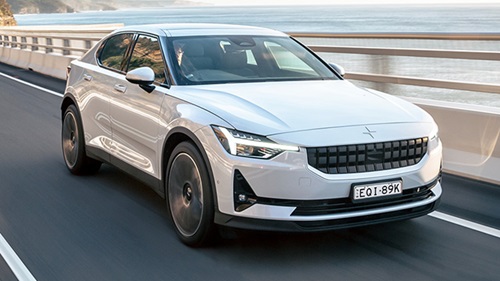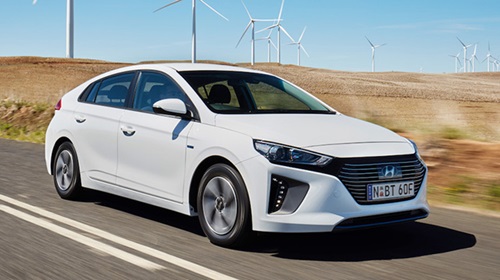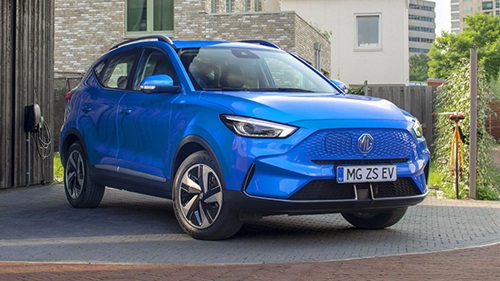Words by Tim Pomroy
Photo by Anthony Warry
2022 Kia Niro S EV vs. Polestar 2 comparison review
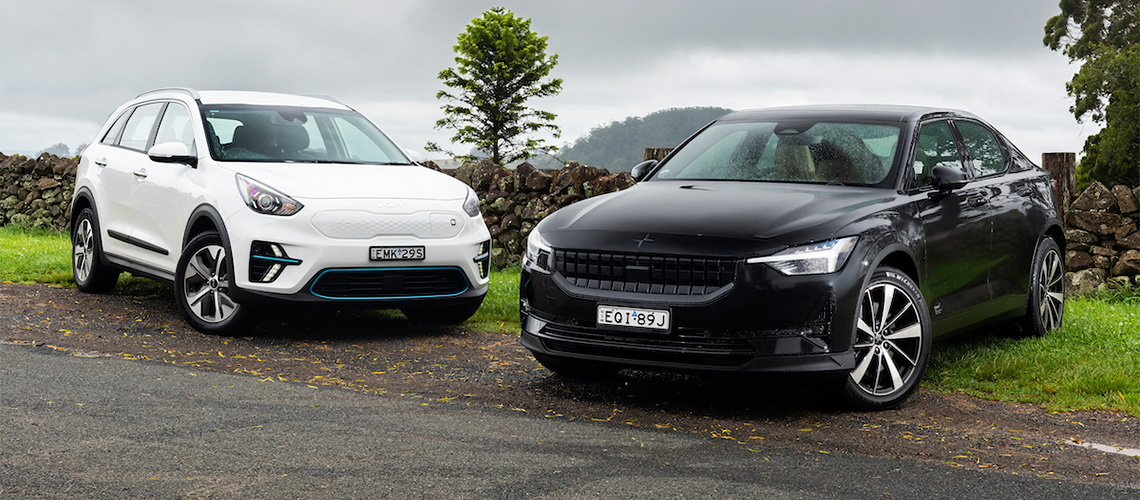
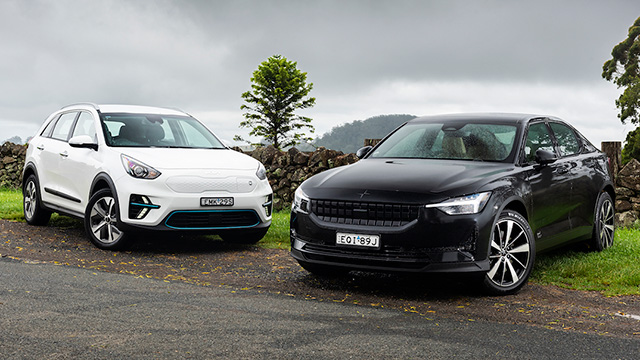
While they have a similar driving range and price tag, the 2022 Kia Niro S and Polestar 2 electric vehicles (EVs) are poles apart in some respects.
If you're in the market for an electric SUV, the 2022 Kira Niro EV and Polestar 2 are both attractive propositions.
Similar price tags and driving ranges will likely have the two models pitted against each other on many prospective buyers' shortlists, but which one gets our pick?
The 2022 Kia Niro S EV at a glance
It’s fair to say Kia’s foray into the EV scene came after watching and learning as big brother Hyundai rolled out the Ioniq in late 2017, followed by the Kona Hybrid, PHEV and EV in 2019. The Kia Niro (pictured above in white) launched here mid-2021 with the same three-pronged line-up as the Kona, but most interest predictably centred on the EV.
While ‘new’ here, the Niro launched globally in 2017 and Kia has just provided a sneak preview of an all-new model which could make its way here by the end of the year.
How much does the 2022 Kia Niro S EV cost?
The current Niro EV has two models: the S (our test vehicle) is priced at $62,590 and the Sport is $65,590. Premium paint costs an extra $590.
2022 Kia Niro S EV power, torque and driving range
The Niro S has a 150kW/395Nm electric motor driving the front wheels and is fitted with a 64kWh lithium-ion battery, providing a range of up to 455km.
2022 Kia Niro S EV safety and tech
Standard features include an eight-inch infotainment touchscreen, wireless Android Auto and Apple CarPlay, six-speaker audio, keyless entry, eight-way power adjustable driver’s seat, rear parking sensors, rear camera, and 17-inch alloys.
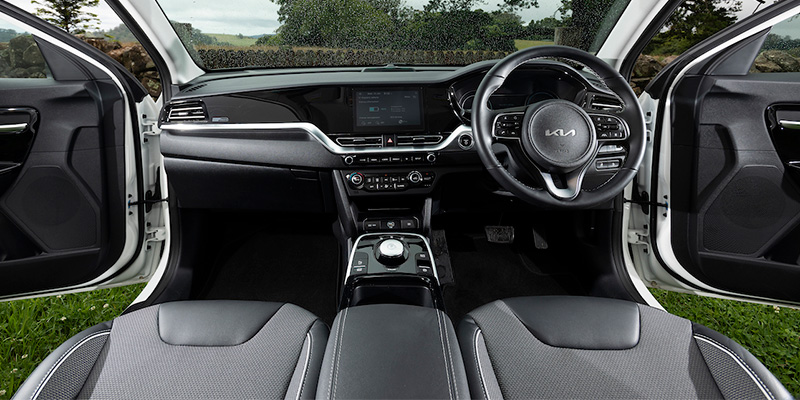
Active safety systems include lane keeping assistance, lane following assistance, and autonomous emergency braking for vehicles, pedestrians, and cyclists, using the front-view camera and radar to identify potential collisions. When cruise control is activated, lane following assistance uses the camera and radar to control acceleration, braking, and steering while maintaining a safe distance from the car in front.
Parking distance warning, a rear-view camera (with dynamic guidelines), smart cruise control, driver attention alert and emergency stop signal are standard across the range, while Sport variants get blind spot detection and rear cross-traffic collision alert. Hybrid and plug-in hybrid Niros have a five-star ANCAP safety rating, while the EV is unrated.
2022 Kia Niro S EV styling
The Niro design mirrors a conventional small SUV, falling between the Kia Seltos and all-new Sportage for size. Inside, it’s much like the current crop of Kia SUVs – sensibly laid out and well finished, with excellent seat comfort in all positions. There’s a more-than-useful 451 litres of luggage space with the rear seats up, increasing to 1405 litres when they’re folded down.
No electric tailgate is probably a concession to keeping the EV’s price down, and the same goes for the indicator stalk remaining on the left of the steering column as per the practice in Europe.
The 2022 Polestar 2 at a glance
Polestar is a newcomer to the EV scene in Australia and, unlike some other start-ups, it has an interesting pedigree. Founded by Volvo Cars and Chinese automotive conglomerate Geely (owner of the Volvo brand), Polestar was established as a new Swedish premium electric vehicle brand in 2017. Polestars are built in China, with a manufacturing plant also opening in the US.
The brand has ambitious plans to launch three new cars in the coming three years. The Polestar 3 will be a premium electric performance SUV set to launch in 2022 and the first Polestar built at the new factory in the US.
Getting behind the wheel for a test drive could be a challenge, as there aren’t any traditional bricks-and-mortar showrooms. Instead, a series of temporary pop-up shops will appear ahead of permanent space and destination points that are planned to progressively roll out during 2022.
2022 Polestar 2 price, power and driving range
The three-model Polestar line-up starts at $59,900 for the 170kW/69kWh model. Next is the long-range version (our test vehicle) priced at $64,900, which uses the same 170kW electric motor with a larger 78kWh lithium-ion battery, pushing the range from 470km to 540km. A 300kW/78kWh dual-motor model is priced at $69,000 and rounds out the range. The sharp pricing makes the Polestar 2 and Niro eligible for the NSW government’s $3000 rebate and, along with abolition of stamp duty, buyers can save up to $5540 on any eligible EV priced under $68,750.
2022 Polestar 2 tech and safety
While Polestar pitches itself as a ‘premium EV brand’, the standard features list doesn’t break any new ground. It includes an 11.15-inch infotainment screen, eight-speaker 250 watt audio, keyless entry, electric tailgate with foot sensor opening, rear-view camera, front and rear parking sensors, LED headlamps and rear light cluster, dual-zone climate control, semi-electric adjustable front seats and 19-inch alloys.
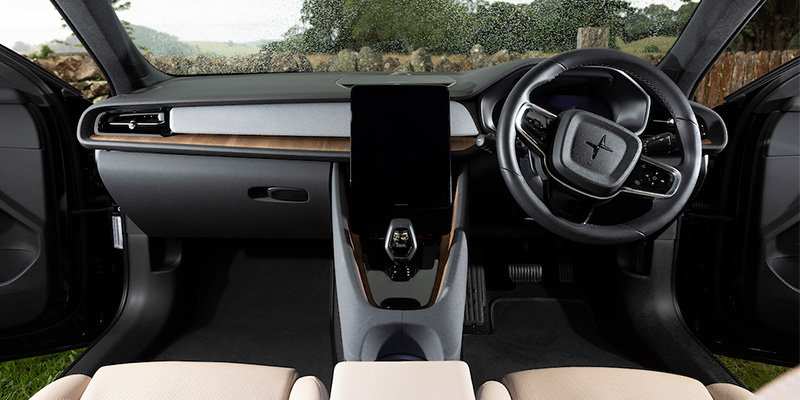
Keeping the options list simple seems to be the Polestar way, with just two packs available: a Plus Pack ($6000) includes 600-watt Harman Kardon audio, electric front seats and panoramic roof; and a Pilot Pack ($5000) adds extra safety tech with blind spot monitoring, cross traffic and rear cross traffic alert, adaptive cruise control and bending adaptive LED headlamps.
Volvo’s reputation for safety is second to none and the Polestar 2 carries a five-star Euro NCAP safety rating. Driver assistance technology is enhanced with the optional Pilot Pack, which also includes a 360-degree surround view camera. Adding the Pilot Pack to the standard range still keeps it under the $68,750 rebate threshold.
Using Volvo’s CMA platform that underpins its XC40 small SUV, the Polestar 2 treads its own path. While SUVs dominate the market here, in Europe wagons and hatchbacks remain popular and the Polestar 2 is a five-door fastback design. It’s larger than the Niro but has a nearly identical wheelbase.
The Polestar 2’s DNA is firmly embedded with the Scandinavian design principles of minimalism and modernism, and the exterior features little in the way of adornments or chrome work, instead relying on strong, sharp lines that incorporate ‘Thor’s hammer’ front headlamps and a full-width LED strip that runs across the rear liftback. Opening the boot reveals a 405-litre cargo volume, with an additional 40 litres under the bonnet.
2022 Polestar 2 styling
The interior follows the same theme. It’s visually clean thanks in part to the central 11.5-inch infotainment screen having a multitude of functionality that reduces the amount of switchgear compared to the conventionally designed Niro. Behind the functionality is Android Automotive operating software developed in collaboration with Google, meaning Google Maps, Google Assistant and Google Play Store are built in.
The system is intuitive, especially for anyone who uses Google apps, and it has been custom designed to reflect Polestar’s design cues, with strong fonts and large buttons that keep driver distraction to a minimum. The large digital instrument display is also nicely executed and the digital speed and range graphics remain easy to read with the navigation map running.
Perhaps the best example of the new technology on offer is there’s no engine stop/start button. You simply walk up to the car with the remote in your pocket, open the door, settle in, select drive or reverse, and drive off. It’s disconcerting initially, especially when you stop for the first time, press the park button, and just step out.
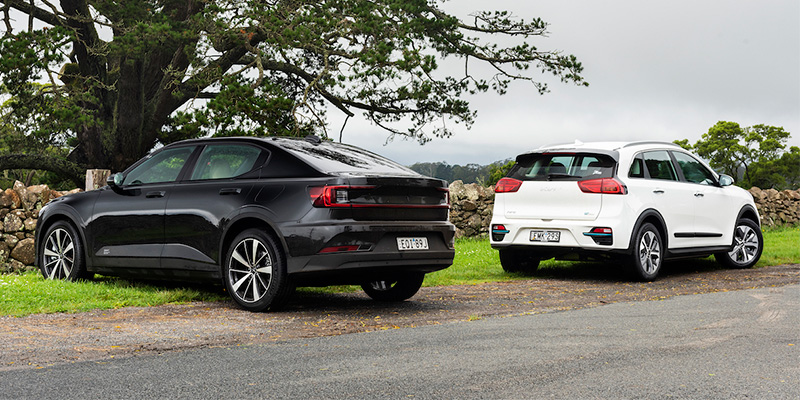
The front seats are supportive and bolstered but not too firm. The rear seats are a little less supportive and leg room is at a premium, with the high waisted design amplifying the interior’s cosy nature. A large panoramic glass roof lightens the interior, although it doesn’t feature a sunshade and could be an issue in Australia’s summer months. Owners with similar predicaments sometimes consult window tinting specialists – an option if you don’t want to fry your scone in the midday sun.
A 170kW/330Nm electric motor drives the front wheels and our long-range test car had the 78kWh lithium-ion battery, providing up to 540km of range. Tipping the scales at around 2000kg depending on the model, the Polestar 2 has a bit more lead in its pants compared to the Niro’s 1800kg. It also has a 20kW edge over the Niro, but 65Nm less torque.
Driving the 2022 Kia Niro S EV and Polestar 2
Out on the road, the Polestar 2 has a more measured character than the Niro. Acceleration is more linear and responsive to driver inputs, although the Niro does feel sharper and quicker off the mark thanks to its torque advantage.
The Polestar’s one-pedal drive and regenerative braking system is aggressive and attuned to EV driving. The stronger of the two regeneration modes slows the car to a complete stop and negates the use of conventional braking. It’s a very easy system to acclimatise to and can direct up to 100kW of energy back to the battery under the right conditions.
The Polestar’s chassis has a taut feel with a wheel and tyre package that’s more sports orientated. It’s firmer than the plush-riding Niro but not overly so, and it coped well over the various surfaces on our test route. Driving it on winding country roads is a rewarding experience.
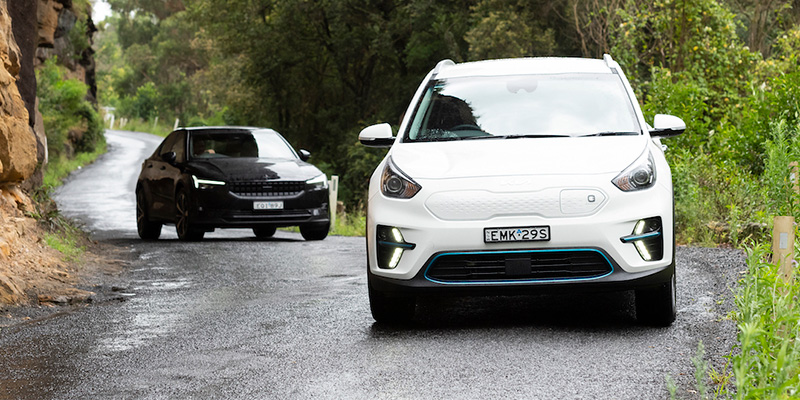
The Niro feels more SUV-like, with a bit more body roll and pitch through corners. Unlike the rest of the Kia range, the Niro didn’t receive any local suspension tuning due to COVID restrictions.
It has three levels of regeneration adjustable via paddle shifter, but reverts to the lowest setting each time the car is switched off. It’s an unnecessary hassle that perhaps speaks to the Niro’s age and it doesn’t have as much bite as the system in the Polestar, requiring the use of the conventional braking system in some instances. Our preference in an EV is to use the one-pedal system as much as possible to replenish the battery.
A 50kW fast charger tops up the Niro’s battery (0-80 per cent) in 75 minutes and this can be cut to 54 minutes plugging into a 100kW fast charger. Polestar claims a more powerful (155kW) DC fast charger, common in Europe, can charge its battery from 10-80 per cent in 35 minutes, so direct comparisons are difficult, but our experience suggests there would be little difference in times when using a 50kW charger for both.
So, is the Kia Niro EV or Polestar 2 the better EV?
Given Polestar is an EV-only manufacturer (and Swedish), its more holistic approach to environmental transport solutions is to be expected. Two examples are a repairable battery pack, instead of replacement, and using materials for the interior that can be recycled.
In a former life, Polestar was the performance arm for Volvo and that shines through the way it handles the bends. The Polestar 2 feels more like a driver’s car while the Niro’s packaging will appeal to a wider audience. It’s as user-friendly as they come and families will prefer the extra practicality it affords, but the Polestar 2’s ability out on the open road makes it our pick.
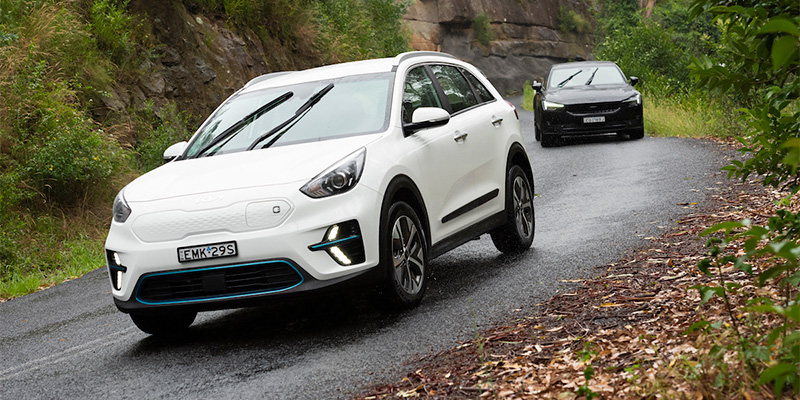
2022 Kia Niro EV price and specs
- Engine: single electric motor (FWD)
- Battery: 64kWh
- Power: 150kW
- Torque: 395Nm
- Driving range: 455km
- ANCAP: Not tested
- Price: $62,590 (plus ORC)
2022 Polestar 2 price and specs
- Engine: single electric motor (FWD)
- Battery: 78kWh
- Power: 170kW
- Torque: 330Nm
- Driving range: 540km
- ANCAP: Not tested
- Price: $64,900 (plus ORC)
Ready to make the switch to an EV?
Our EV loans offer a 1.5% discount on the current interest rate for full electric vehicles so you can make the switch sooner.








